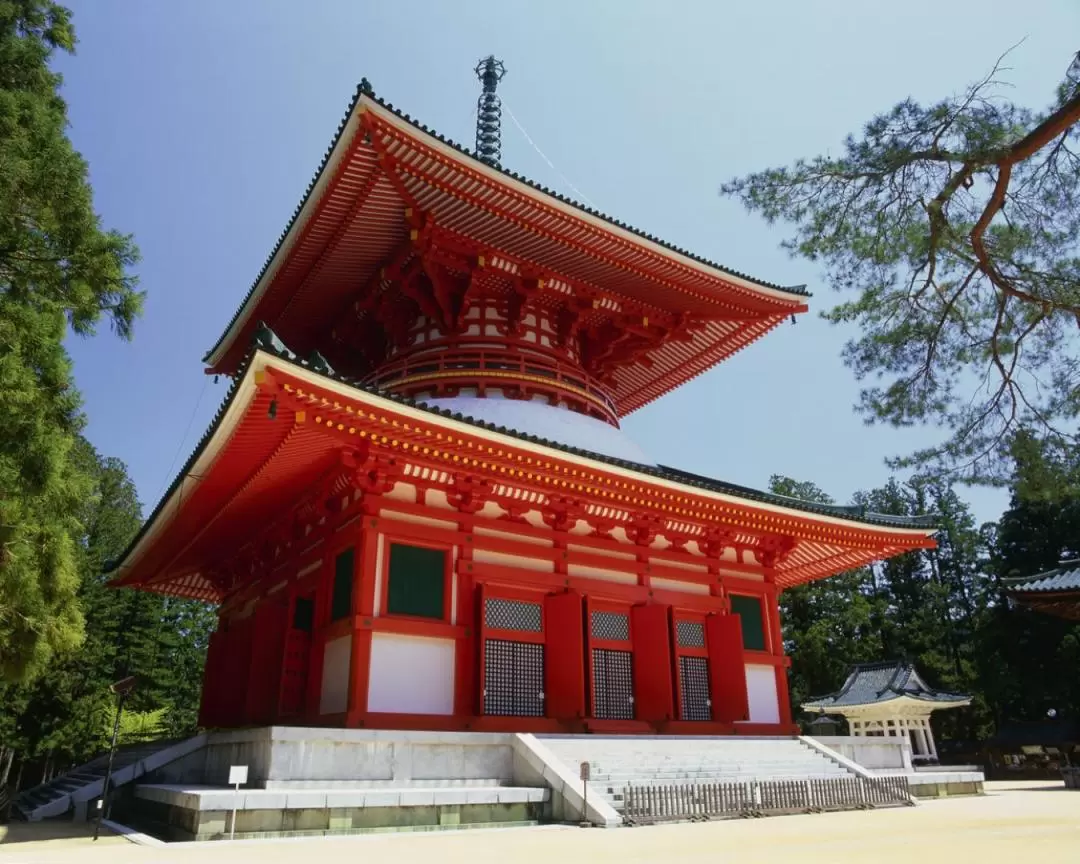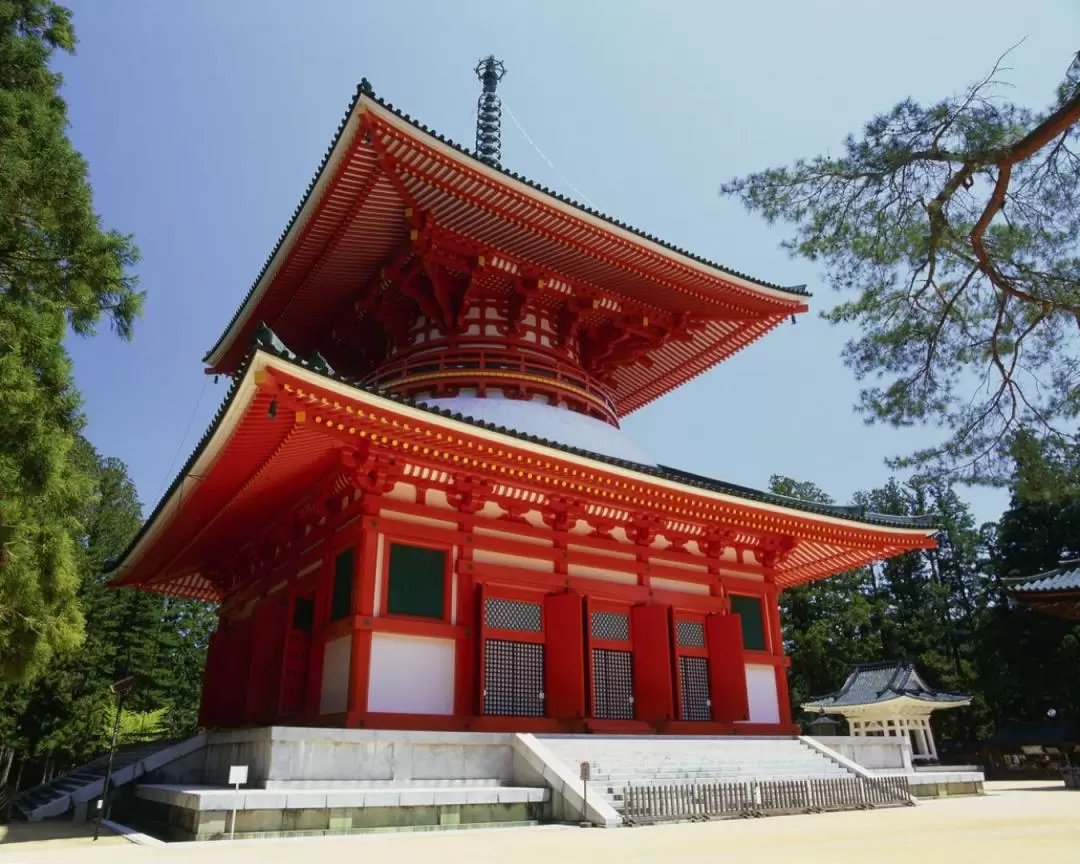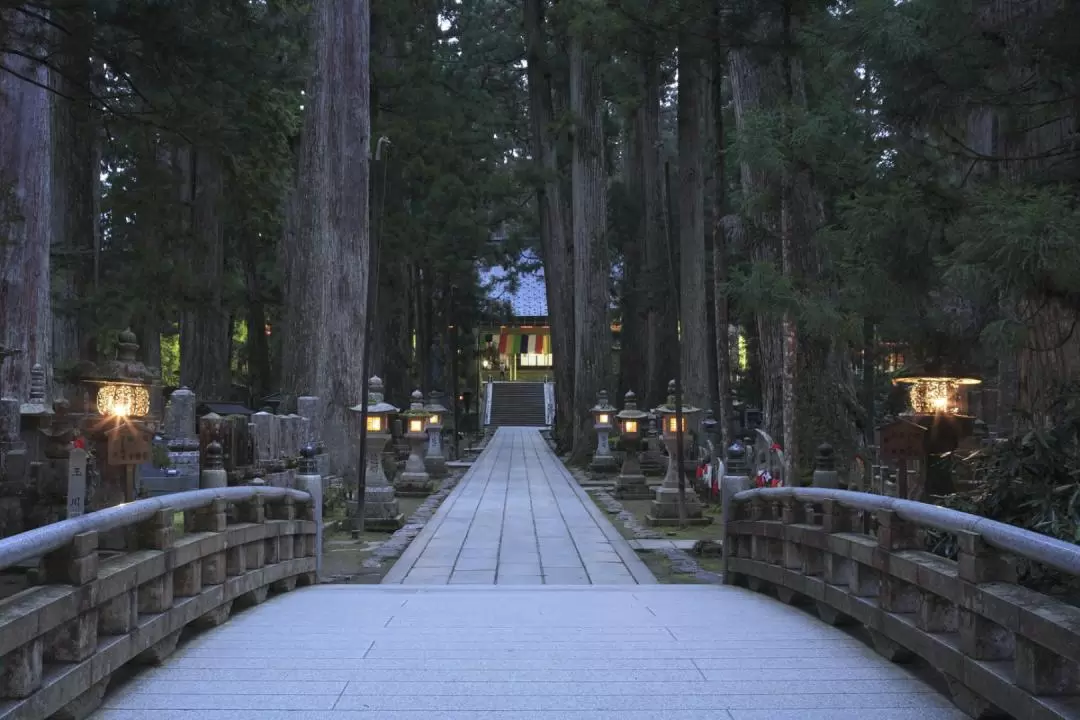"Discover the Serenity of Mt Koya on a Guided Walking Tour from Osaka"
#Mt Koya# Walking Tour# Osaka# Japan# Buddhist Pilgrimage# Cultural Experience# Nature Walk# Temple Stay# UNESCO World Heritage Site# Sacred Mountains# Spiritual Journey# Japanese Buddhism# Historical Landmarks# Scenic Views# Traditional Architecture# Meditation Retreat# Pilgrimage Trail# Religious Sites# Zen Buddhism# Cultural Immersion# Outdoor Adventure
5(2 ratings)
US$291
Nestled amidst the serene mountains of Japan lies the mystical and enchanting Mt Koya, a destination that beckons travelers seeking a spiritual and cultural experience like no other. Embark on a journey of discovery with a guided walking tour of Mt Koya from Osaka, where every step unveils the rich tapestry of history, tradition, and natural beauty that define this sacred site.
As you leave the bustling city of Osaka behind, the scenic drive to Mt Koya sets the stage for the tranquility and peace that await you. Arriving at this UNESCO World Heritage site, you are greeted by the towering cedar trees and the solemn atmosphere of the Okunoin Cemetery, the largest of its kind in Japan. Here, thousands of moss-covered tombstones and towering pagodas create a hauntingly beautiful setting, inviting contemplation and reflection.
Your expert guide, well-versed in the history and legends of Mt Koya, leads you through the labyrinthine paths of the cemetery, sharing stories of the monks and samurais laid to rest here and the spiritual practices that have endured for centuries. Feel the weight of history in every stone and tree, as you immerse yourself in the sacred aura of this revered site.
Continuing your journey, you make your way to the heart of Mt Koya, the Kongobuji Temple, the headquarters of the Shingon sect of Buddhism. Marvel at the exquisite architecture of the temple buildings, adorned with intricate carvings and colorful paintings that depict the Buddhist deities and legends. Step inside the hushed halls, where the scent of incense lingers in the air, and the sound of chanting monks fills the space with a sense of serenity.
After exploring the temple complex, your guide takes you to a traditional Buddhist vegetarian lunch, known as Shojin Ryori, a culinary experience that nourishes both body and soul. Delight in the artful presentation of seasonal vegetables, tofu, and rice, prepared with mindfulness and respect for the natural flavors.
Rejuvenated and inspired, you set out on a leisurely walk through the picturesque town of Mt Koya, where ancient temples, charming shops, and peaceful gardens await your discovery. Feel the rhythm of daily life in this spiritual enclave, where monks in traditional robes pass by and the gentle chime of temple bells marks the passage of time.
As the day draws to a close, you find yourself at the Garan Temple complex, the spiritual center of Mt Koya, where the towering pagoda and majestic halls stand as a testament to the enduring legacy of Buddhism in Japan. Join the evening meditation session, guided by a resident monk, and feel your spirit uplifted by the collective energy of the participants.
As you bid farewell to Mt Koya and make your way back to Osaka, you carry with you the memories of a day filled with beauty, tranquility, and spiritual insight. The Mt Koya tour has offered you a glimpse into the soul of Japan, a journey that will stay with you long after you have returned home.
As you leave the bustling city of Osaka behind, the scenic drive to Mt Koya sets the stage for the tranquility and peace that await you. Arriving at this UNESCO World Heritage site, you are greeted by the towering cedar trees and the solemn atmosphere of the Okunoin Cemetery, the largest of its kind in Japan. Here, thousands of moss-covered tombstones and towering pagodas create a hauntingly beautiful setting, inviting contemplation and reflection.
Your expert guide, well-versed in the history and legends of Mt Koya, leads you through the labyrinthine paths of the cemetery, sharing stories of the monks and samurais laid to rest here and the spiritual practices that have endured for centuries. Feel the weight of history in every stone and tree, as you immerse yourself in the sacred aura of this revered site.
Continuing your journey, you make your way to the heart of Mt Koya, the Kongobuji Temple, the headquarters of the Shingon sect of Buddhism. Marvel at the exquisite architecture of the temple buildings, adorned with intricate carvings and colorful paintings that depict the Buddhist deities and legends. Step inside the hushed halls, where the scent of incense lingers in the air, and the sound of chanting monks fills the space with a sense of serenity.
After exploring the temple complex, your guide takes you to a traditional Buddhist vegetarian lunch, known as Shojin Ryori, a culinary experience that nourishes both body and soul. Delight in the artful presentation of seasonal vegetables, tofu, and rice, prepared with mindfulness and respect for the natural flavors.
Rejuvenated and inspired, you set out on a leisurely walk through the picturesque town of Mt Koya, where ancient temples, charming shops, and peaceful gardens await your discovery. Feel the rhythm of daily life in this spiritual enclave, where monks in traditional robes pass by and the gentle chime of temple bells marks the passage of time.
As the day draws to a close, you find yourself at the Garan Temple complex, the spiritual center of Mt Koya, where the towering pagoda and majestic halls stand as a testament to the enduring legacy of Buddhism in Japan. Join the evening meditation session, guided by a resident monk, and feel your spirit uplifted by the collective energy of the participants.
As you bid farewell to Mt Koya and make your way back to Osaka, you carry with you the memories of a day filled with beauty, tranquility, and spiritual insight. The Mt Koya tour has offered you a glimpse into the soul of Japan, a journey that will stay with you long after you have returned home.
There are 3 plans you can choose.
1-day walking tour of the downtown, Koyasan. An experienced guide with a strong attachment to Koyosan will orient you and show you some of the unique places, and sites.
2-day itinerary for average-paced travelers which takes you through Koyasan, the center of Shingon Buddhism and Stay at Shukubo. Parts of the route, namely the Women Pilgrims Course, follow a nature trail, and proper walking shoes are recommended, especially during or after wet weather
Mt.Koya & Kumanokodo Walking 3-Day tour :The Kumano Kodo Trail and the Camino de Santiago de Compostela are both pilgrimage routes with UNESCO World Heritage status.
If you’re looking to do a trek in Japan, you’re probably considering either the Kumano Kodo, which is in Wakayama (southern Kansai), or the Nakasendo, which connects Tokyo and Kyoto via the mountains of Central Honshu. Since the Nakasendo has become popular in recent years, we find that the Kumano Kodo gives you a more authentic and less touristy experience of the Japanese countryside. The Kumano Kodo is actually a network of several ancient pilgrimage routes that converge on Kumano Hongu Taisha Shrine, a powerful Shinto shrine in the mountainous heart of Wakayama Prefecture. Hongu Taisha is the most important of three famous shrines known as the Kumano Sanzan. The other two, Kumano Nachi Taisha and Kumano Hayatama Taisha, are both near the eastern coast of Wakayama and are connected to Hongu Taisha by well-traveled pilgrimage routes.


